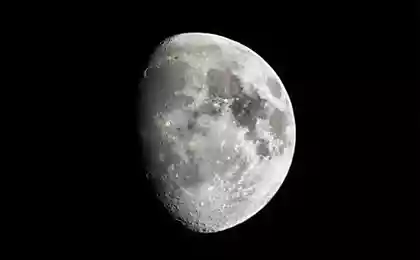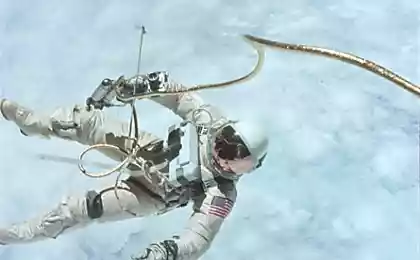1354
Space error
Many people are confused about what is happening in space. In fairness, very few of us have been in space, and space for many of us emerged from the nine planets in the solar system and hair Sandra Bullock ("Gravity"), which does not flutter in weightless conditions. There is at least one question about the cosmos, to which any person to answer incorrectly. Let's look at ten common myths about the cosmos.
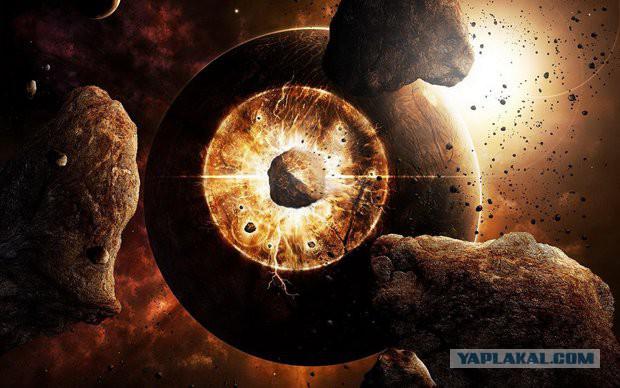
People explode
Perhaps one of the oldest and most common myths about space is as follows: in the vacuum of space, anyone would explode without a special suit. The logic is that since there is no pressure, we would have swelled and burst like a balloon that is inflated too much. It might surprise you, but people are much more durable than balloons. We do not burst when we make an injection, and not bursting into space - our bodies can not handle vacuum. Blow up a bit, it's a fact. But our bones, skin and other organs are stable enough to survive this, if someone is not actively blocked tear. In fact, some people have already experienced conditions of extremely low pressure, working during space missions. In 1966, one person tested spacesuit and suddenly underwent decompression at 36,500 feet. He lost consciousness, but did not explode. Even survived and recovered fully.
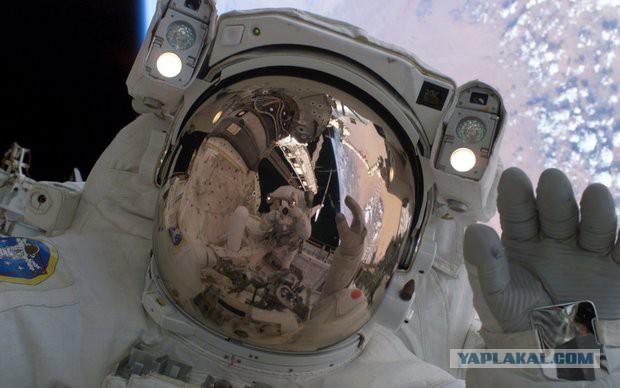
People freeze
This fallacy is often used in movies. How many of you did not see how someone overboard spaceship without a costume? He quickly freezes, and if it does not bounce back, turns into an icicle and swam away. In reality, the opposite occurs. You will not freeze, if you get into space, you are, by contrast, can overheat. Water over the heat source will heat to rise, cool, and again on the new. But in space, there is nothing that could take warm water, and then cooling to the freezing point is impossible. Your body will work, producing heat. However, by the time you become unbearably hot, you're already dead.

Blood boils
This myth has nothing to do with the fact that your body will overheat if you find yourself in a vacuum. Instead, it is directly linked to the fact that any liquid has a direct relationship with the ambient pressure. The higher the pressure, the higher the boiling point, and vice versa. Because it is easier to move the liquid in the form of gas. People with logic can guess that in space, where there is no pressure at all, the liquid will boil, and blood - too liquid. Armstrong line runs where the atmospheric pressure is so low that the liquid will boil at room temperature. The problem is that if the liquid will boil in space, blood - no. Will boil other liquids like saliva in the mouth. The man, whose decompressed by 36 500 meters, said that saliva "cooked" his language. Boil this will be more like a drying hairdryer. However, blood, unlike saliva is in a closed system, and your vein will retain its pressure in a liquid state. Even if you are in a complete vacuum, the fact that the blood in the closed system, meaning that it does not turn into a gas and evaporate back home.

Sun
Sun - is how to begin the study of the cosmos. This is a big ball of fire, around which all the planets are turning, which is far enough, but warms us and it does not burn. Given that we could not exist without sunlight and heat, it is surprising the biggest misconception about the sun: it burns. If you ever burned yourself flames, congratulations, you got more fire than it could give you the sun. In reality, the sun - it's a big ball of gas that emits light and heat in the process of nuclear fusion, when two hydrogen atoms to form a helium atom. The sun gives light and heat, but usually does not fire at all. It's just a big, warm light.

Black holes - a funnel
There is another common misconception that can be attributed to the image of black holes in movies and cartoons. Of course, black holes are "invisible" in nature, but for the audience like you and draw them like sinister Majhdhaar. They represent two-dimensional hopper with a yield of only on one side. In reality, the black hole - a sphere. She does not have one side that suck you, rather it looks like a giant planet with gravity. If you come too close to it on either side, that's when you swallow.

Re-entry into the atmosphere
We all saw how spaceships make re-entry into Earth's atmosphere (the so-called re-entering). This is a serious test for the vessel; As a rule, the surface is strongly heated. Many of us think that this is due to the friction between the ship and the atmosphere, and in this explanation makes sense: as if the ship was surrounded by nothing, and suddenly begins to rub against the atmosphere with huge speed. Of course, everything will become hot. The truth is that friction is given less than one percent of heat during re-entry. The main reason for the heating - compression, or compression. When the ship is carried back to the Earth, the air through which it passes, compressed and surrounds the ship. This is called the bow shock. Air which collides with the head of the ship, pushing it. Speed occurring leads to the fact that the air is heated, with no time to decompress or cooling. Although some of the heat absorbed heat shield, beautiful pictures re-entry into the atmosphere it creates the air around the unit.

Comet tail
Imagine for a second comet. Most likely, you will present a piece of ice, hurtling through space with a tail of light or fire behind. Perhaps, for you will be a surprise that the direction of the comet's tail has nothing to do with the direction in which the motion of the comet. The fact that the tail of the comet is not a result of friction or destruction of the body. The solar wind heats the comet and leads to the melting of the ice, so the ice particles and sand flying in the opposite direction of the wind. Therefore, the comet's tail will not necessarily reach for her train, but there will always be directed away from the sun.
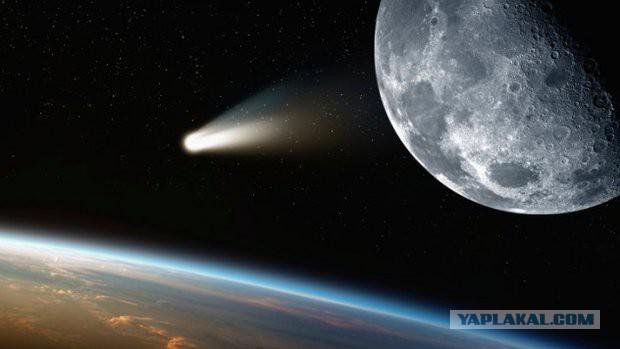
Mercury
After dropping Pluto's career, Mercury was the smallest planet. Also is the closest planet to the Sun, so it is natural to assume that this is the hottest planet in our system. In short, Mercury - damn cold planet. Firstly, at the hottest point temperature makes the Mercury 427 degrees Celsius. Even if the entire planet was maintained this temperature, all the same it would be colder Mercury Venus (460 degrees). The reason that Venus, which is almost 50 million miles farther from the Sun than Mercury, the warmer is in the atmosphere of carbon dioxide. Mercury can not boast of anything.
Another reason is related to its orbit and rotation. Complete revolution around the Sun Mercury in 88 Earth days, and full rotation around its axis - 58 Earth days. Night on the planet lasts for 58 days, giving enough time to the temperature dropped to -173 degrees Celsius.
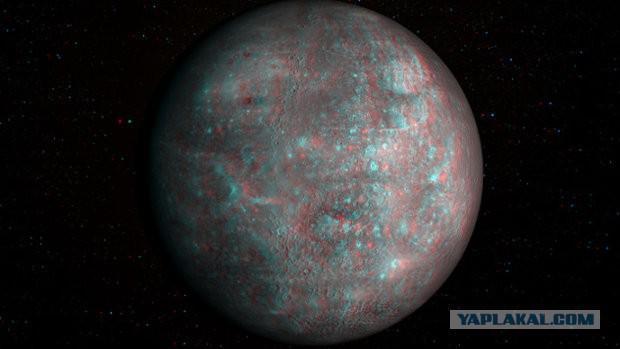
Probes
Everyone knows that the rover "Kyuriositi" currently engaged in important research work on Mars. But people forget about the many other probes that we sent over the years. Mars rover "Opportunity" landed on Mars in 2003 to undertake a mission for 90 days. After 10 years, it still works. Many people think that we never sent probes to planets other than Mars. Yes, we are sending a plurality of satellites in orbit, but put something on another planet? Between 1970 and 1984 the Soviet Union successfully planted eight probes on the surface of Venus. However, they all burned through unfriendly atmosphere of the planet. The most resistant venerohod lived about two hours, much longer than expected.
If we go a little further into space, we will reach Jupiter. Rover Jupiter - is even more difficult goal than Mars or Venus, because it consists almost entirely of gas, which can not go. But this has not stopped scientists and they sent a probe there. In 1989, the spacecraft "Galileo" went to study Jupiter and its moons than prozanimalsya and the following 14 years. He also dropped a probe into Jupiter, who sent information on the composition of the planet. While on the way to Jupiter and the other is a ship that, the very first information is invaluable, because at the time the probe "Galileo" was the only probe plunged into Jupiter's atmosphere.
Posted in [mergetime] 1402672536 [/ mergetime]
The state of weightlessness
This myth seems so obvious that many people did not want to persuade himself. Satellites, spacecraft, astronauts and others do not experience weightlessness. This weightlessness, or microgravity, does not exist and no one had ever experienced. Most people are under the impression, as so, astronauts and ships float, because they are far away from Earth and is not affected by its gravitational pull. In fact that gravity allows them to swim. During a flyby of the Earth or any other celestial body with significant gravity, the object falls. But as the earth is constantly moving, these objects do not bump into it.
Earth's gravity is trying to pull the ship on its surface, but the movement continues, therefore, the object continues to fall. This eternal fall and leads to the illusion of weightlessness. Astronauts inside the ship also fall, but it seems as if they are floating. The same condition can be tested in a falling elevator or plane. And you can experience 23 seconds of weightlessness in an aircraft, free falling at an altitude of 9000 meters.
All.


People explode
Perhaps one of the oldest and most common myths about space is as follows: in the vacuum of space, anyone would explode without a special suit. The logic is that since there is no pressure, we would have swelled and burst like a balloon that is inflated too much. It might surprise you, but people are much more durable than balloons. We do not burst when we make an injection, and not bursting into space - our bodies can not handle vacuum. Blow up a bit, it's a fact. But our bones, skin and other organs are stable enough to survive this, if someone is not actively blocked tear. In fact, some people have already experienced conditions of extremely low pressure, working during space missions. In 1966, one person tested spacesuit and suddenly underwent decompression at 36,500 feet. He lost consciousness, but did not explode. Even survived and recovered fully.

People freeze
This fallacy is often used in movies. How many of you did not see how someone overboard spaceship without a costume? He quickly freezes, and if it does not bounce back, turns into an icicle and swam away. In reality, the opposite occurs. You will not freeze, if you get into space, you are, by contrast, can overheat. Water over the heat source will heat to rise, cool, and again on the new. But in space, there is nothing that could take warm water, and then cooling to the freezing point is impossible. Your body will work, producing heat. However, by the time you become unbearably hot, you're already dead.

Blood boils
This myth has nothing to do with the fact that your body will overheat if you find yourself in a vacuum. Instead, it is directly linked to the fact that any liquid has a direct relationship with the ambient pressure. The higher the pressure, the higher the boiling point, and vice versa. Because it is easier to move the liquid in the form of gas. People with logic can guess that in space, where there is no pressure at all, the liquid will boil, and blood - too liquid. Armstrong line runs where the atmospheric pressure is so low that the liquid will boil at room temperature. The problem is that if the liquid will boil in space, blood - no. Will boil other liquids like saliva in the mouth. The man, whose decompressed by 36 500 meters, said that saliva "cooked" his language. Boil this will be more like a drying hairdryer. However, blood, unlike saliva is in a closed system, and your vein will retain its pressure in a liquid state. Even if you are in a complete vacuum, the fact that the blood in the closed system, meaning that it does not turn into a gas and evaporate back home.

Sun
Sun - is how to begin the study of the cosmos. This is a big ball of fire, around which all the planets are turning, which is far enough, but warms us and it does not burn. Given that we could not exist without sunlight and heat, it is surprising the biggest misconception about the sun: it burns. If you ever burned yourself flames, congratulations, you got more fire than it could give you the sun. In reality, the sun - it's a big ball of gas that emits light and heat in the process of nuclear fusion, when two hydrogen atoms to form a helium atom. The sun gives light and heat, but usually does not fire at all. It's just a big, warm light.

Black holes - a funnel
There is another common misconception that can be attributed to the image of black holes in movies and cartoons. Of course, black holes are "invisible" in nature, but for the audience like you and draw them like sinister Majhdhaar. They represent two-dimensional hopper with a yield of only on one side. In reality, the black hole - a sphere. She does not have one side that suck you, rather it looks like a giant planet with gravity. If you come too close to it on either side, that's when you swallow.

Re-entry into the atmosphere
We all saw how spaceships make re-entry into Earth's atmosphere (the so-called re-entering). This is a serious test for the vessel; As a rule, the surface is strongly heated. Many of us think that this is due to the friction between the ship and the atmosphere, and in this explanation makes sense: as if the ship was surrounded by nothing, and suddenly begins to rub against the atmosphere with huge speed. Of course, everything will become hot. The truth is that friction is given less than one percent of heat during re-entry. The main reason for the heating - compression, or compression. When the ship is carried back to the Earth, the air through which it passes, compressed and surrounds the ship. This is called the bow shock. Air which collides with the head of the ship, pushing it. Speed occurring leads to the fact that the air is heated, with no time to decompress or cooling. Although some of the heat absorbed heat shield, beautiful pictures re-entry into the atmosphere it creates the air around the unit.

Comet tail
Imagine for a second comet. Most likely, you will present a piece of ice, hurtling through space with a tail of light or fire behind. Perhaps, for you will be a surprise that the direction of the comet's tail has nothing to do with the direction in which the motion of the comet. The fact that the tail of the comet is not a result of friction or destruction of the body. The solar wind heats the comet and leads to the melting of the ice, so the ice particles and sand flying in the opposite direction of the wind. Therefore, the comet's tail will not necessarily reach for her train, but there will always be directed away from the sun.

Mercury
After dropping Pluto's career, Mercury was the smallest planet. Also is the closest planet to the Sun, so it is natural to assume that this is the hottest planet in our system. In short, Mercury - damn cold planet. Firstly, at the hottest point temperature makes the Mercury 427 degrees Celsius. Even if the entire planet was maintained this temperature, all the same it would be colder Mercury Venus (460 degrees). The reason that Venus, which is almost 50 million miles farther from the Sun than Mercury, the warmer is in the atmosphere of carbon dioxide. Mercury can not boast of anything.
Another reason is related to its orbit and rotation. Complete revolution around the Sun Mercury in 88 Earth days, and full rotation around its axis - 58 Earth days. Night on the planet lasts for 58 days, giving enough time to the temperature dropped to -173 degrees Celsius.

Probes
Everyone knows that the rover "Kyuriositi" currently engaged in important research work on Mars. But people forget about the many other probes that we sent over the years. Mars rover "Opportunity" landed on Mars in 2003 to undertake a mission for 90 days. After 10 years, it still works. Many people think that we never sent probes to planets other than Mars. Yes, we are sending a plurality of satellites in orbit, but put something on another planet? Between 1970 and 1984 the Soviet Union successfully planted eight probes on the surface of Venus. However, they all burned through unfriendly atmosphere of the planet. The most resistant venerohod lived about two hours, much longer than expected.
If we go a little further into space, we will reach Jupiter. Rover Jupiter - is even more difficult goal than Mars or Venus, because it consists almost entirely of gas, which can not go. But this has not stopped scientists and they sent a probe there. In 1989, the spacecraft "Galileo" went to study Jupiter and its moons than prozanimalsya and the following 14 years. He also dropped a probe into Jupiter, who sent information on the composition of the planet. While on the way to Jupiter and the other is a ship that, the very first information is invaluable, because at the time the probe "Galileo" was the only probe plunged into Jupiter's atmosphere.
Posted in [mergetime] 1402672536 [/ mergetime]
The state of weightlessness
This myth seems so obvious that many people did not want to persuade himself. Satellites, spacecraft, astronauts and others do not experience weightlessness. This weightlessness, or microgravity, does not exist and no one had ever experienced. Most people are under the impression, as so, astronauts and ships float, because they are far away from Earth and is not affected by its gravitational pull. In fact that gravity allows them to swim. During a flyby of the Earth or any other celestial body with significant gravity, the object falls. But as the earth is constantly moving, these objects do not bump into it.
Earth's gravity is trying to pull the ship on its surface, but the movement continues, therefore, the object continues to fall. This eternal fall and leads to the illusion of weightlessness. Astronauts inside the ship also fall, but it seems as if they are floating. The same condition can be tested in a falling elevator or plane. And you can experience 23 seconds of weightlessness in an aircraft, free falling at an altitude of 9000 meters.
All.

